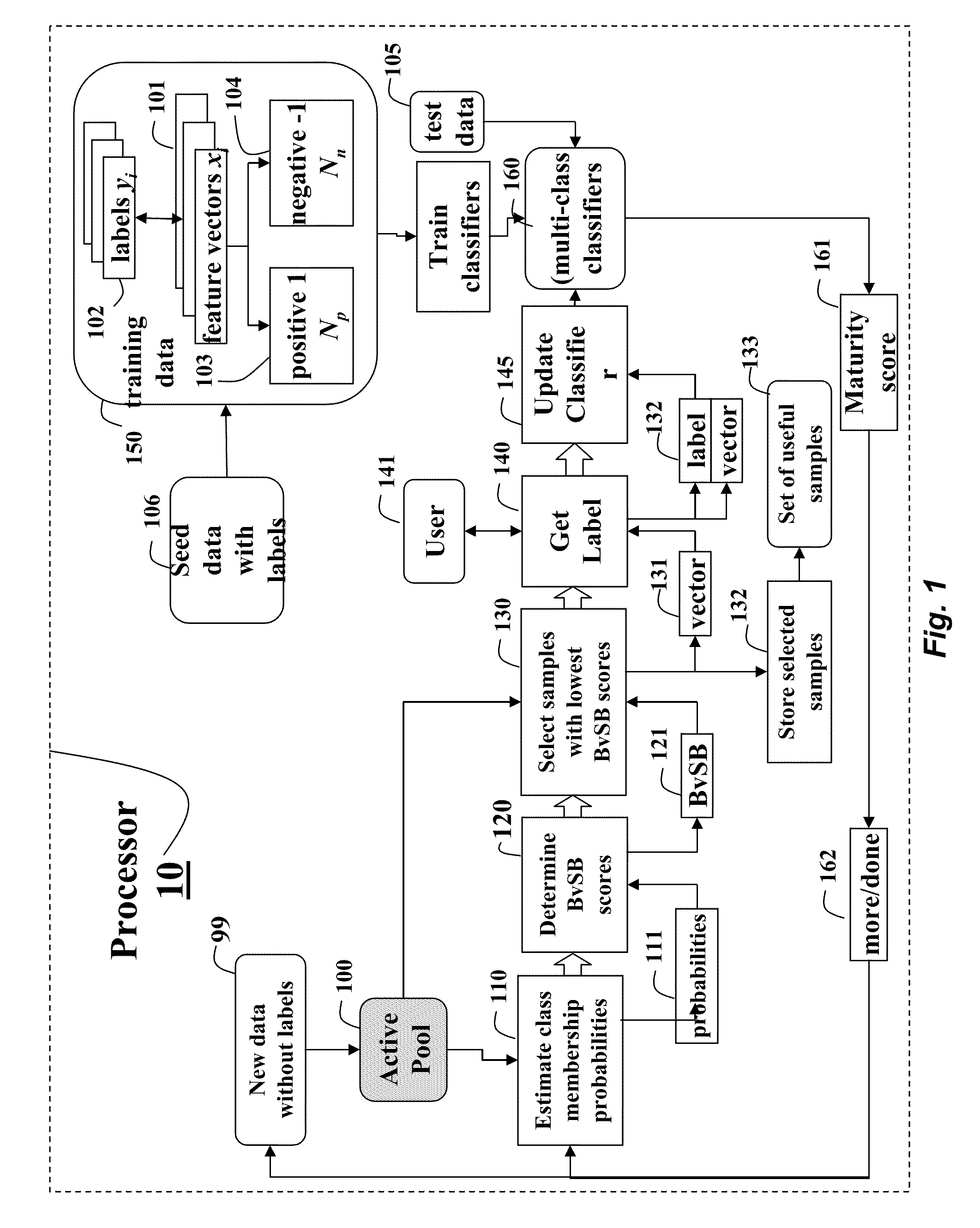Active Learning Method for Multi-Class Classifiers
a multi-class classifier and active learning technology, applied in the field of training multi-class classifiers, can solve the problems of time-consuming and labeled training data preparation, and achieve the effect of reducing the number of training data required, facilitating the handling of a large number of classes, and increasing the number of classes with tim
- Summary
- Abstract
- Description
- Claims
- Application Information
AI Technical Summary
Benefits of technology
Problems solved by technology
Method used
Image
Examples
Embodiment Construction
[0017]Pool-Based Learning
[0018]FIG. 1 shows the general method according to embodiments of the invention. The steps of the method are performed in a processor 10 with suitable memory. Pool-based learning is common in active learning. A classifier 150 is trained using a small randomly selected labeled data set, called a seed data set 106. Two samples are sufficient. Then, the active learning method selects useful data 133 to label from an active pool 100 unlabeled data. New data 99 can be added to the pool as needed. We use the term ‘useful’ to refer to data that improve classification accuracy of the classifier. The accuracy of the classifier is of primary importance.
[0019]The actively selected data, with user-provided labels are then added to the training data. This process is iterative 162, such that, after each iteration of user feedback, the classifier is retrained. Finally, performance evaluation is done using a test data set 105 to produce a maturity score 161. The test data s...
PUM
 Login to View More
Login to View More Abstract
Description
Claims
Application Information
 Login to View More
Login to View More - R&D
- Intellectual Property
- Life Sciences
- Materials
- Tech Scout
- Unparalleled Data Quality
- Higher Quality Content
- 60% Fewer Hallucinations
Browse by: Latest US Patents, China's latest patents, Technical Efficacy Thesaurus, Application Domain, Technology Topic, Popular Technical Reports.
© 2025 PatSnap. All rights reserved.Legal|Privacy policy|Modern Slavery Act Transparency Statement|Sitemap|About US| Contact US: help@patsnap.com



